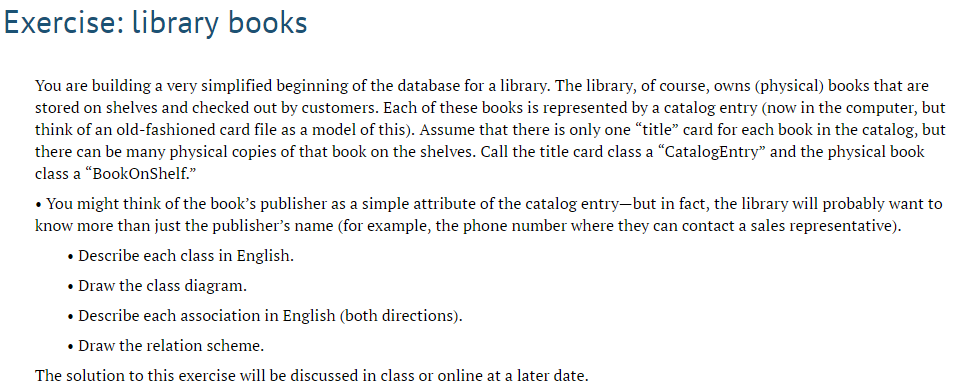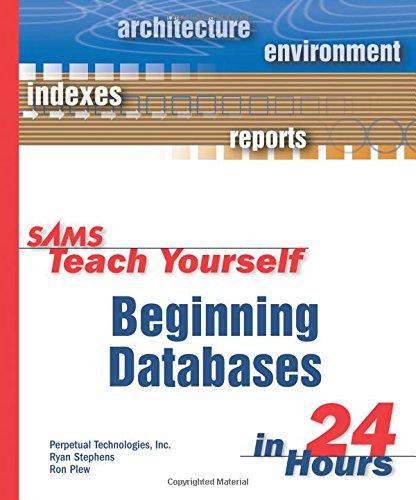Question
Database Exercise: Book Authors Refer back to the library book exercise in the preceding section if necessary. Remember that we couldn't include authors in the
Database Exercise: Book Authors
Refer back to the library book exercise in the preceding section if necessary. Remember that we couldn't include authors in the CatalogEntry class because there might be more than one author for each book.
In a real (old-fashioned) library catalog, there was an additional card for each author of a book. (Author and title cards were contained in different sets of card drawers.)
Design a class diagram that shows the catalog entry plus authors, the attributes of each class, and the association between the classes.
Describe each class in English.
Draw the class diagram.
Describe each association in English (both directions).
Draw the relation scheme.
Your first version of this model might not have included a way to identify which author should be listed first, second, and so on. In real life, authors are very sensitive about this. Revise your model if necessary to accommodate this requirement.
The solution to this exercise will be discussed in class
Exercise: Book Authors
Refer back to the library book exercise in the preceding section if necessary. Remember that we couldn't include authors in the CatalogEntry class because there might be more than one author for each book.
In a real (old-fashioned) library catalog, there was an additional card for each author of a book. (Author and title cards were contained in different sets of card drawers.)
Design a class diagram that shows the catalog entry plus authors, the attributes of each class, and the association between the classes.
Describe each class in English.
Draw the class diagram.
Describe each association in English (both directions).
Draw the relation scheme.
Your first version of this model might not have included a way to identify which author should be listed first, second, and so on. In real life, authors are very sensitive about this. Revise your model if necessary to accommodate this requirement.
library book exercise from preceding section:

Step by Step Solution
There are 3 Steps involved in it
Step: 1

Get Instant Access to Expert-Tailored Solutions
See step-by-step solutions with expert insights and AI powered tools for academic success
Step: 2

Step: 3

Ace Your Homework with AI
Get the answers you need in no time with our AI-driven, step-by-step assistance
Get Started


